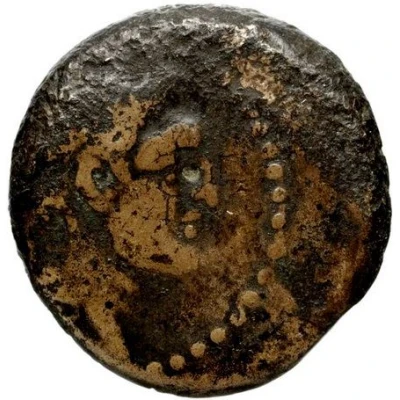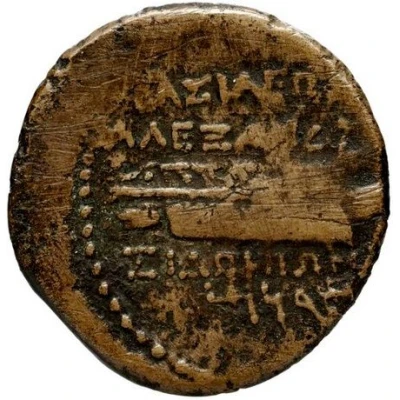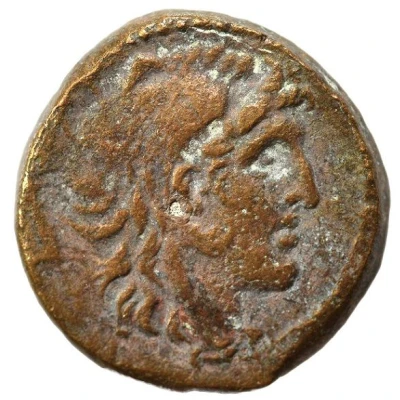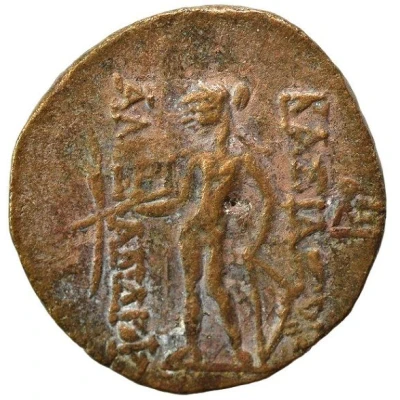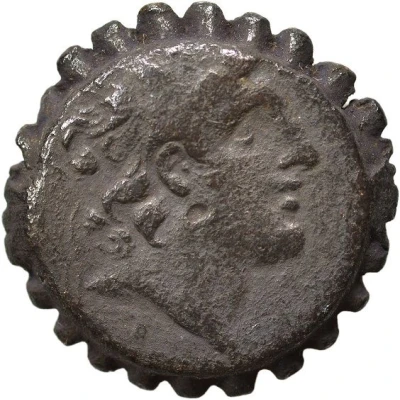
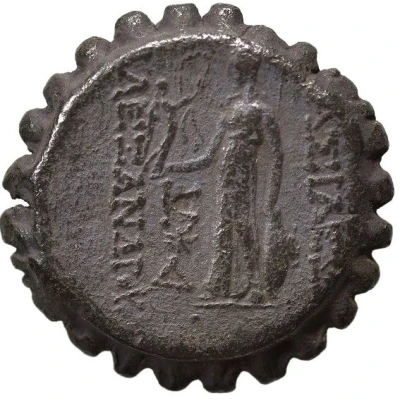

© Solidus Numismatik e.K.
Dichalkon - Alexander 150 BC - 145 BC
| Bronze | 6.0 g | 20 mm |
| Issuer | Seleucid Empire (Seleucid Empire (305 BC - 64 BC)) |
|---|---|
| King | Alexander I Balas (150 BC - 145 BC) |
| Type | Standard circulation coin |
| Years | 150 BC - 145 BC |
| Value | Dichalkon (1⁄24) |
| Currency | Drachm |
| Composition | Bronze |
| Weight | 6.0 g |
| Diameter | 20 mm |
| Shape | Round (irregular, Serrated) |
| Technique | Hammered |
| Orientation | Variable alignment ↺ |
| Demonetized | Yes |
| Updated | 2024-10-10 |
| Numista | N#392488 |
|---|---|
| Rarity index | 94% |
Reverse
Athena standing left, holding Nike and grounded shield, spear leaning against arm; monograms to inner left and in exergue.
K * Δ
Script: Greek
Lettering: BAΣIΛEΩΣ AΛEΞANΔΡOY
Translation: King Alexander (I, Balas)
Interesting fact
One interesting fact about the Dichalkon coin is that it features a unique blend of Greek and Persian influences in its design. The obverse side of the coin depicts a portrait of Alexander the Great, while the reverse side shows a seated Zeus, a common motif in Greek coinage. However, the coin's inscription is written in both Greek and Aramaic, reflecting the cultural diversity of the Seleucid Empire. This blending of cultures is a distinct characteristic of Hellenistic coins, and the Dichalkon coin is a prime example of this fusion.
